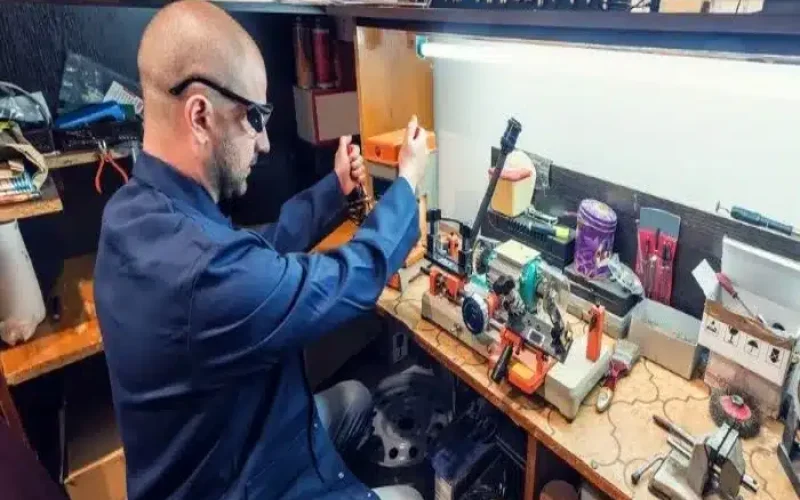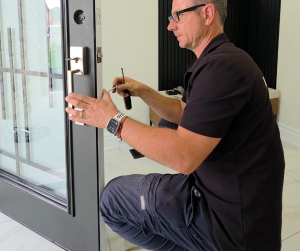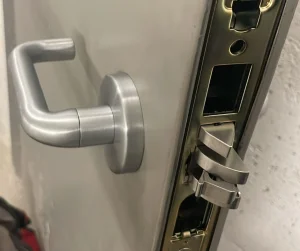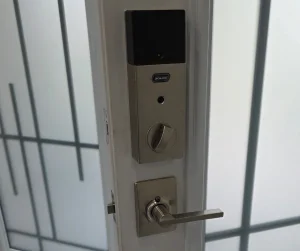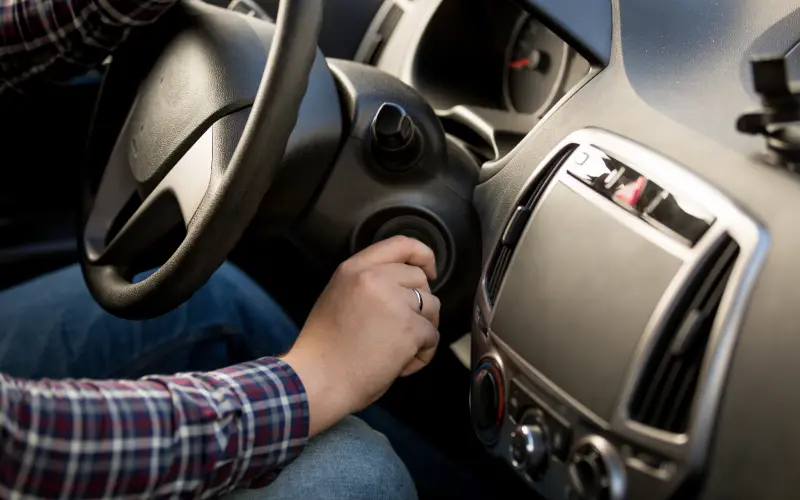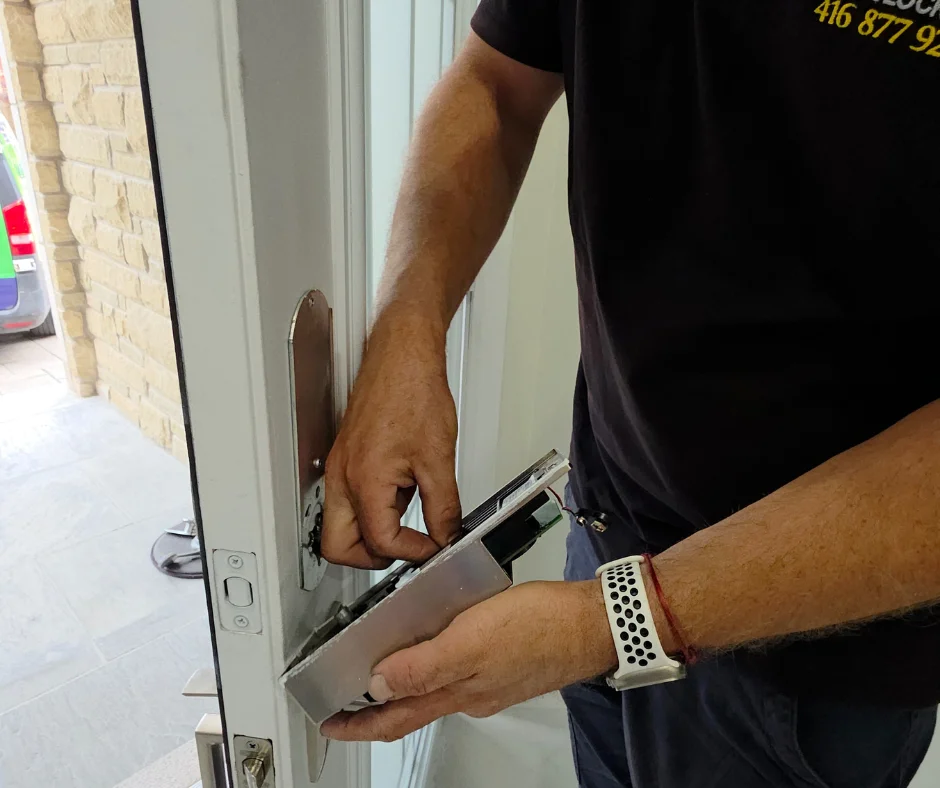
I know a lot of folks in Richmond Hill move here for the same reasons I did, the quiet streets, good schools, and that comfort you feel when you can take an evening walk and wave to your neighbors without worrying what’s around the corner.
You don’t picture waking up to flashing police lights down the block or finding out the house across the street was broken into overnight. But I’ve got to be honest with you, it does happen. Not every day, thank goodness, but often enough that it’s something I can’t ignore in my line of work.
I’ve been in the locksmith business for years, handling calls from across Richmond Hill and surrounding areas like Toronto and North York. And one thing I can say for certain is this: people often underestimate how quickly a break-in can happen, and how little time an intruder needs to take advantage of a weak lock or frame.
The Numbers Behind Richmond Hill Break-Ins
York Regional Police recently reported an 11% decline in residential and commercial break-ins compared to the previous year. On paper, that sounds like good news. But when you look closer at the reports, Richmond Hill still saw 11 residential break-ins and 5 commercial ones in just the last 30 days.
Think about that: in one month alone, 16 homes or businesses had their security violated. That’s 16 families or business owners who had to deal with damage, lost property, and that sinking feeling of “someone was in my space.”
The decline is positive, but as a locksmith who’s responded to these situations firsthand, I can tell you, even one break-in feels like too many when it happens to you.
How Burglars Actually Get In
Most people imagine burglars sneaking around at night with advanced tools or Hollywood-style lockpicking skills. The reality is far less dramatic. In Richmond Hill, I’ve seen intruders gain entry in the simplest ways:
- Forcing weak doors: A single kick can splinter a door frame if it’s not reinforced.
- Targeting old locks: Outdated hardware, especially spring-latch locks, are easy to bypass.
- Exploiting side or back doors: Burglars rarely go for the front if there’s an easier entry point around the back.
- Garage access: A common weak spot, once they’re inside the garage, many doors into the house are secured with only a standard handle lock.
One homeowner I worked with near Bayview Avenue in Richmond Hill had a beautiful solid-wood door but relied on a single, decades-old lock. The break-in left the lock intact but the frame completely split. A stronger setup could have made all the difference.
Why Lock Quality and Door Reinforcement Matter
When I stop by a home in Richmond Hill, I never just glance at the lock and call it secure. I take in the whole doorway, because over the years I’ve seen how burglars actually get in. You can have the best deadbolt money can buy, but if the frame around it is weak or the strike plate is barely hanging on, it’s like putting a heavy vault door on a piece of cardboard. One good kick, and it all gives way.
So when I’m walking a homeowner through what really matters, I usually start with the basics: get a proper deadbolt. A Grade 1 or Grade 2 lock that’s built to take some punishment. Then I turn to the strike plate, if it’s the thin kind that came with the lock, it needs upgrading. I’ll recommend a reinforced one secured with 3-inch screws that dig deep into the studs, not just the frame.
From there, I always check the door itself. If it’s hollow-core, I’ll be honest and say it won’t hold up under force. A solid-core door is worth every penny when safety’s on the line. And finally, I never skip the hinges. On outward-opening doors, intruders can actually lift the door right off if there aren’t security pins in place. Adding those pins is a small step, but it closes a big gap that most people don’t even think about until it’s too late.
I’ve handled installations where the difference was night and day. After a reinforcement job, you can feel the door settle into place more solidly. It’s the kind of quiet strength you don’t think about every day, but it’s there when you need it.
Real-Life Stories
I’ll never forget a call I had from a Richmond Hill homeowner near Yonge Street. They had come home from dinner and was shocked to find the back door pried open. Among the things the thief had taken were electronics and jewelry. However, what shook the family most was knowing someone had been in their home.
We ended up replacing the old lock with a multipoint system and reinforcing the door frame. The homeowner later told me, “I can finally sleep again without checking every noise at night.” That’s what proper security does, it doesn’t just protect your belongings, it restores peace of mind.
On the flip side, I also worked with a North York family that upgraded their locks after a neighbor’s break-in. A few months later, someone attempted to force their patio door. You could see the pry marks, but the reinforced frame held. The intruder left empty-handed. That’s proof right there of how the right hardware can make the difference.
Why Break-Ins Are Still a Risk Despite Declining Numbers
Statistics can be reassuring, but they can also be misleading. An 11% decline in break-ins is good, but it doesn’t erase the fact that these crimes are still happening. And unfortunately, when economic pressures rise, property crimes often rise too.
Richmond Hill is also seen as an attractive target because of the higher property values and newer vehicles parked in driveways. Thieves know that even if one attempt fails, the next house over might be easier. That’s why relying on “it won’t happen to me” is one of the biggest mistakes I see homeowners make.
Practical Steps You Can Take Today
If you’re reading this and wondering what you should do, here are some steps that don’t require breaking the bank:
- Inspect your main doors. Are they solid-core or reinforced? If not, upgrading is worth the investment.
- Upgrade old locks. If your locks are more than 10–15 years old, they may not meet today’s standards.
- Reinforce the frame. Installing a stronger strike plate with long screws can drastically improve resistance.
- Secure your garage. Don’t rely on the basic lock inside the garage entry door, treat it like an exterior door.
- Think layered security. Locks are the foundation, but pairing them with lighting, cameras, or alarm systems adds extra deterrence.
Why Work With a Professional Locksmith
I get it. You can buy locks at a hardware store and install them yourself. But I’ve been called too many times to fix DIY jobs where the hardware wasn’t aligned, the strike plate was weak, or the wrong type of lock was chosen for the door.
A professional locksmith doesn’t just install hardware. We assess the entire entry point, consider the specific risks in your neighborhood, and recommend solutions that actually hold up. In Richmond Hill, that often means balancing security with the aesthetic of newer homes and making sure the hardware complements both.
Strong Doors and Locks: Protection Against Break-Ins
Break-and-enters in Richmond Hill may be declining, but they’re far from gone. For the 16 families and business owners who faced one last month, statistics don’t mean much. What matters is how strong your doors and locks are when someone decides to test them.
As a locksmith who’s seen both the aftermath of break-ins and the relief of prevented ones, my advice is simple: don’t wait until it happens to you. Take a walk around your home today. Look at your locks, your frames, your doors. Ask yourself honestly, would they hold up under pressure?
If the answer is no, that’s where I come in. I’ll give you straightforward advice, recommend what truly works for Richmond Hill homes, and make sure your locks are more than just a piece of metal on the door. My mission is to protect your peace of mind.


